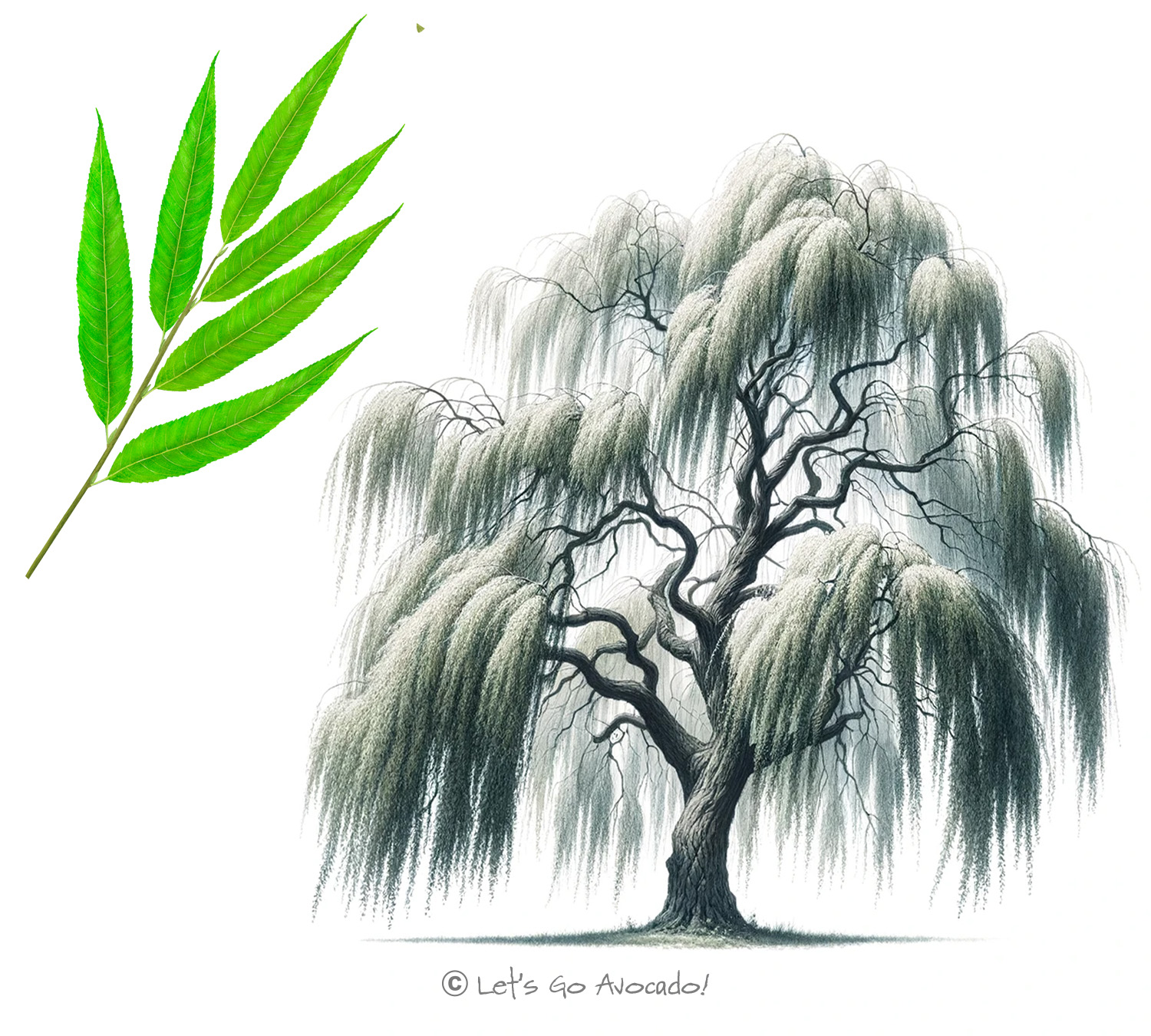The Weeping Willow Tree: A Graceful Beauty by the Water
Have you ever seen a tree that looks like it’s raining branches? That’s the Weeping Willow, or Salix babylonica! This tree is famous for its long, flowing branches that droop gracefully towards the ground. It’s like a natural green waterfall! Weeping Willows are often found near ponds and rivers, making them a beautiful sight in many landscapes.
What’s Special About the Weeping Willow?
The Weeping Willow has long, slender branches and leaves that create a soft, cascading effect. It’s like the tree is always in a gentle dance with the wind. The leaves are narrow and a bright green color, which turns golden in the fall. The bark of the Weeping Willow is rough and gray, adding a bit of toughness to its otherwise delicate look.
How Big Does This Tree Get?
Weeping Willows can get quite big – they can grow up to 30-50 feet tall (9-15 meters). And they don’t just grow tall; they also spread out wide, so they need plenty of space to show off their beautiful branches.
The Weeping Willow’s Life
In the spring, the Weeping Willow is one of the first trees to get its leaves, making it a sign that warmer weather is coming. It grows quickly and loves having its roots in wet soil, which is why you often see it near water. Its branches can even grow new roots if they touch the ground!
Why Are Weeping Willows Important?
Weeping Willows are great for nature. They help to keep the soil around rivers and lakes from eroding, which means they keep the water’s edge healthy and strong. Birds and insects also love these trees, using them for shelter and food.
Is the Weeping Willow Strong?
Even though it looks delicate, the Weeping Willow is a strong tree. It can handle living in different kinds of soil and environments. But it’s happiest when it’s by the water, soaking up the sun and the wet soil.
Do People Like This Tree?
Yes, they do! People love Weeping Willows for their unique and beautiful look. They’re often planted in parks and big gardens, where people can sit under them and enjoy their shade. The tree’s graceful appearance has also made it a popular subject in paintings and photographs.
The Weeping Willow tree is more than just a pretty tree; it’s a helpful and important part of the environment. It helps keep riverbanks safe, gives animals a home, and makes our landscapes more beautiful.
Remember, every tree is special in its own way, just like the Weeping Willow with its flowing branches and love for water. Keep exploring and learning about trees, and you’ll discover all the amazing things they do for us and the world around us.










